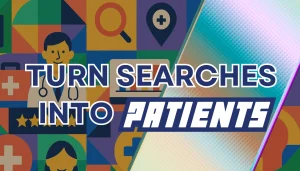Build a Medical Website That Converts with These Proven Tactics
Want more new patient inquiries from your website? Need to boost appointment bookings, increase form submissions, or reduce bounce rates? Start by asking yourself: Is your medical website design built to convert—or just to look professional?
Healthcare consumers today expect more than a polished homepage. They want clarity, trust, and a fast path to action. Whether you’re a private practice, multi-location clinic, or specialty provider, the design of your website plays a critical role in how many potential patients you turn into actual ones.
Here’s how to turn your site into a conversion engine.
Build Trust with Strategic Medical Website Design from the First Click
Before patients make appointments, they need reassurance. They want to know they’re in the right place—and in capable hands.
1. Lead with a Clear Value Proposition
Communicate who you are, what you offer, and who you serve—within the first few seconds. Use headline text to call out your specialty, service areas, or unique approach. Make it about the patient, not just your practice.
2. Use Patient-Centric Language
Replace clinical jargon with clear, empathetic copy that speaks to your visitors’ concerns. Focus on outcomes and how you help, not just on procedures or credentials.
3. Highlight Key Services Up Front
Organize your homepage so users can easily find your core offerings—whether it’s primary care, pediatrics, urgent care, or a specialty service. Use buttons or cards that let visitors “pick a path” quickly.
Guide Visitors to Take Action
A high-converting medical website does more than inform—it makes next steps obvious and easy.
4. Make Appointment Booking Frictionless
Add a prominent “Book Appointment” button in your header and throughout your site. Use a simple, mobile-friendly form or connect to your scheduling software. Avoid unnecessary fields.
5. Include Click-to-Call on Mobile
Make it easy for mobile users to call your office directly from any page. Use a sticky call icon or CTA button with a clear label like “Call Now to Schedule.”
6. Offer Multiple CTAs
Not every visitor is ready to make a booking. Include secondary calls-to-action like “Ask a Question,” “Get a Second Opinion,” or “Join Our Mailing List” to capture interest from earlier-stage visitors.
Boost Confidence with Social Proof in Your Medical Website Design
Patients rely heavily on reviews and reputation before making a decision.
7. Display Reviews and Testimonials
Showcase real patient testimonials or star ratings from platforms like Google or Healthgrades. Place them throughout key pages—especially service pages and the homepage.
8. Use Trust Badges and Affiliations
Display certifications, insurance partners, association memberships, or hospital affiliations. These subtle visuals can have a big impact on credibility.
Optimize Design for Better Results
Every click matters. Design your site to make patient journeys as smooth as possible.
9. Reduce Visual Clutter and Clicks
Use white space, clean typography, and simple navigation. Make it easy to find key info in under three clicks—whether it’s services, locations, or contact info.
10. Optimize Medical Website Design by Tracking Performance and Testing Often
Monitor how visitors interact with your site. Use tools like heatmaps, session recordings, or A/B testing to identify what’s working—and what’s not. Adjust your headlines, button text, or layout based on real behavior, not assumptions.
Want to attract more patients without increasing your ad budget? Then your website has to do more than exist—it needs to convert. Begin with these 10 features to enhance trust, inform action, and minimize friction at every step.




